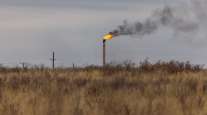EPA Moves to Cut Obama-Era Fuel-Efficiency Standards

The Trump administration announced that fuel-efficiency regulations for cars and light trucks are too stringent and must be revised, formally beginning a process sought by the U.S. auto industry to rollback anti-pollution targets.
The Environmental Protection Agency also said it was considering whether to revoke the waiver that allows California to set its own emissions requirements that exceed the federal standards.
The greenhouse gas emissions standards that were a signature element of President Barack Obama’s climate-change policy are too aggressive, EPA chief Scott Pruitt said in a statement April 2 outlining the decision.
RELATED: California’s ready to retaliate if Trump cuts vehicle emission rules, sources say
“The Obama EPA’s determination was wrong,” Pruitt said in a news release. “Obama’s EPA cut the midterm evaluation process short with politically charged expediency, made assumptions about the standards that didn’t comport with reality and set the standards too high.”
Pruitt’s so-called final determination, announced by the agency April 2, is a step needed to dial back the Obama-era rules, which aimed to slash carbon emissions from cars and light trucks by boosting fuel economy to a fleet average of more than 50 mpg by 2025. That standard is equivalent to about 36 mpg in real-world driving.
RELATED: EPA chief signals showdown with California on tailpipe standards
In the statement, Pruitt said the agency would begin drafting fresh auto standards for 2022-25 alongside the National Highway Traffic Safety Administration.
The widely anticipated action drew criticism from consumer and environmental groups ahead of its release. It dovetails with other steps to unwind actions aimed at combating climate change, such as President Donald Trump’s withdrawal from the Paris climate accord and EPA’s repeal of a rule slashing carbon emissions from power plants.
EPA’s announcement echoed criticisms expressed by automakers, saying the Obama Administration short-circuited the process and rushed out its final determination just days before leaving office.
The decision also puts the Trump administration’s tenuous relationship with California officials on an even rockier path. The state has its own car and truck efficiency standards aligned with the Obama-era targets, made through an agreement reached in 2011 with the support of nearly all major automakers.
“The California waiver is still being reexamined by EPA under Administrator Pruitt’s leadership,” the agency said. California has been writing its own clean-air rules since 1970, as part of the state’s bid to crack down on smog.
California officials have vowed to resist a Trump-led rollback of the federal targets.
Without an agreement between Washington and Sacramento, easing the federal standards could lead to a messy legal battle, a patchwork of efficiency standards, or both. The friction has broader implications for carmakers because California’s rules are followed by 12 other states that collectively account for about a third of U.S. auto sales.




